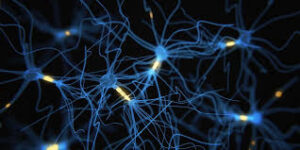THE PROCESS

Neurosculpting is a guided process that involves several steps designed to create an ideal environment for the brain to adapt and change. Here’s how it works:
- Prepare the Mind
- Begin by creating a calm, safe space where you feel comfortable and undisturbed.
- Use relaxation techniques, such as deep breathing or progressive muscle relaxation, to ease tension and prepare the brain to focus.
- Engage Both Hemispheres
- Neurosculpting exercises involve engaging both the logical and creative sides of the brain.
- For example, you might use visualization (creative side) while naming emotions or identifying sensations (logical side). This dual engagement helps balance and integrate the brain’s responses.
- Introduce a New Pattern
- During the practice, you’ll use focused visualization or affirmations to introduce a new, empowering thought or belief.
- For example, you might visualize yourself responding calmly to a situation that usually triggers fear or stress.
- Anchor the Change
- To make the new pattern stick, the exercise often involves associating it with a physical sensation or action, like a light touch on your hand or a deep breath.
- This anchoring technique helps your brain associate the new pattern with a sense of safety and calm.
- Integrate and Reflect
- After completing the exercise, take a few moments to reflect on the experience and notice any shifts in how you feel.
- Integration is key—by practicing regularly, the new patterns become more established, making them easier to access in everyday life.
By following these steps, neurosculpting offers a practical and gentle way to nurture emotional resilience and cope with the challenges of recovery. It’s not about forcing change but creating a supportive environment where change can naturally unfold.

Benefits for the Withdrawal, PAWS, ABIND Healing Process
Neurosculpting offers unique benefits that can support you through the challenges of withdrawal and recovery. While it doesn’t speed up the physical healing of your nervous system, it helps you create a mental and emotional foundation to navigate the process with greater ease and resilience. Here’s how it can help:
- Reduced Stress and Anxiety
Withdrawal often brings heightened stress and anxiety, leaving you feeling trapped in cycles of worry or overwhelm. Neurosculpting teaches techniques to calm your mind and create moments of peace, even in the midst of discomfort. By working with the brain’s natural calming mechanisms, you can reduce the intensity of stress responses and find space to breathe.
- Improved Emotional Regulation
During withdrawal, emotions can feel overwhelming and unpredictable. Neurosculpting helps you build a gentler relationship with these emotions, teaching you how to allow them without resistance and reduce their impact. Over time, this practice fosters emotional balance and steadiness, even when symptoms feel intense.
- Enhanced Ability to Cope with Symptoms
Withdrawal symptoms can be relentless, but neurosculpting provides tools to shift your focus from fear to empowerment. By practicing visualization and anchoring calm states, you can create mental pathways that help you cope more effectively with physical and emotional challenges.
- Building Confidence and Resilience in the Healing Process
One of the greatest challenges of withdrawal is the uncertainty it brings. Neurosculpting empowers you to trust your body’s ability to heal and strengthens your resilience through small, meaningful shifts. As you practice, you’ll notice a growing sense of confidence—not in controlling the process, but in your capacity to navigate it with courage and grace.
